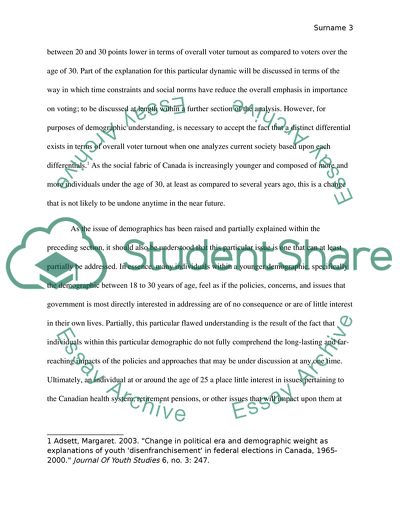Cite this document
(Low Voting Problem in Present Canadian Elections Coursework Example | Topics and Well Written Essays - 2250 words, n.d.)
Low Voting Problem in Present Canadian Elections Coursework Example | Topics and Well Written Essays - 2250 words. https://studentshare.org/politics/1849001-why-do-fewer-people-vote-today-in-canadian-elections-than-in-the-past-is-this-a-problem-what-can-be-done-to-remedy-this
Low Voting Problem in Present Canadian Elections Coursework Example | Topics and Well Written Essays - 2250 words. https://studentshare.org/politics/1849001-why-do-fewer-people-vote-today-in-canadian-elections-than-in-the-past-is-this-a-problem-what-can-be-done-to-remedy-this
(Low Voting Problem in Present Canadian Elections Coursework Example | Topics and Well Written Essays - 2250 Words)
Low Voting Problem in Present Canadian Elections Coursework Example | Topics and Well Written Essays - 2250 Words. https://studentshare.org/politics/1849001-why-do-fewer-people-vote-today-in-canadian-elections-than-in-the-past-is-this-a-problem-what-can-be-done-to-remedy-this.
Low Voting Problem in Present Canadian Elections Coursework Example | Topics and Well Written Essays - 2250 Words. https://studentshare.org/politics/1849001-why-do-fewer-people-vote-today-in-canadian-elections-than-in-the-past-is-this-a-problem-what-can-be-done-to-remedy-this.
“Low Voting Problem in Present Canadian Elections Coursework Example | Topics and Well Written Essays - 2250 Words”. https://studentshare.org/politics/1849001-why-do-fewer-people-vote-today-in-canadian-elections-than-in-the-past-is-this-a-problem-what-can-be-done-to-remedy-this.


